
THE
ANNEX
NEWS





A Selection of Iconic New Yorker Covers from Jens Rosenkrantz’s Private Collection
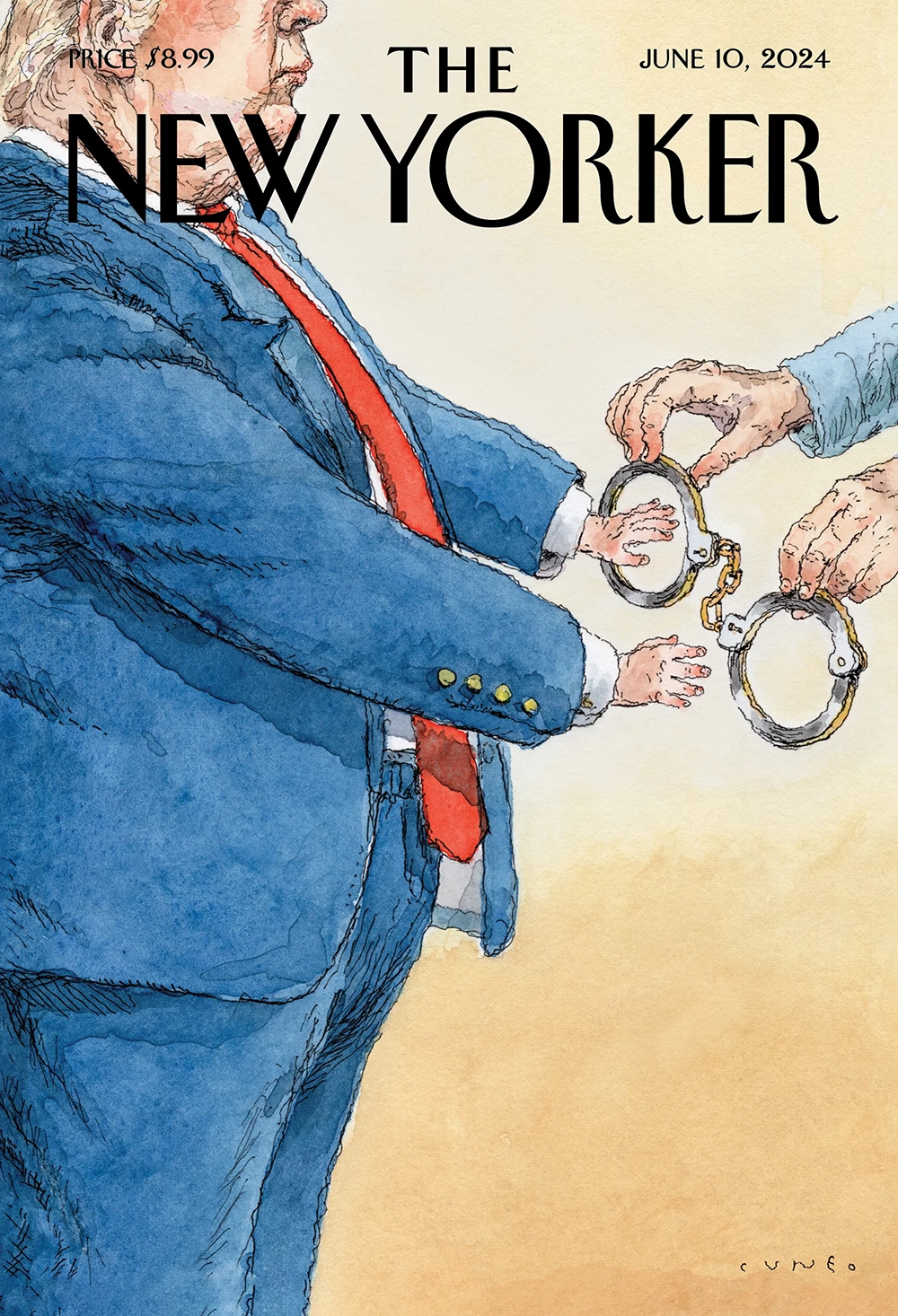
One of the covers on view, created by Canadian artist Barry Blitt. It corresponds to the June 10, 2024 issue.
Jens G. Rosenkrantz’s collection of The New Yorker covers constitutes far more than an archive of graphic design or illustration. It is, instead, a lens through which one can read a century of American visual and political culture, refracted through the pages of one of the most influential magazines of the twentieth and twenty-first centuries. For Rosenkrantz, the act of collecting these images is not a passive accumulation but a curatorial gesture in itself—an insistence on the political significance of images that once circulated weekly, now reframed as testimony of their time.
Among the many artists who have left their mark on the magazine, one figure in particular emerges as a central voice in Rosenkrantz’s collection. Through wit, satire, and visual precision, this artist transformed the cover into a platform for commentary, illuminating tensions around race, power, gender, and the contradictions of American modernity. Their drawings move seamlessly between humor and indictment, situating everyday gestures within the larger currents of political life. In Rosenkrantz’s reading, these covers are not light ephemera but condensed documents of dissent and subtle activism, each one a visual essay disguised as illustration.
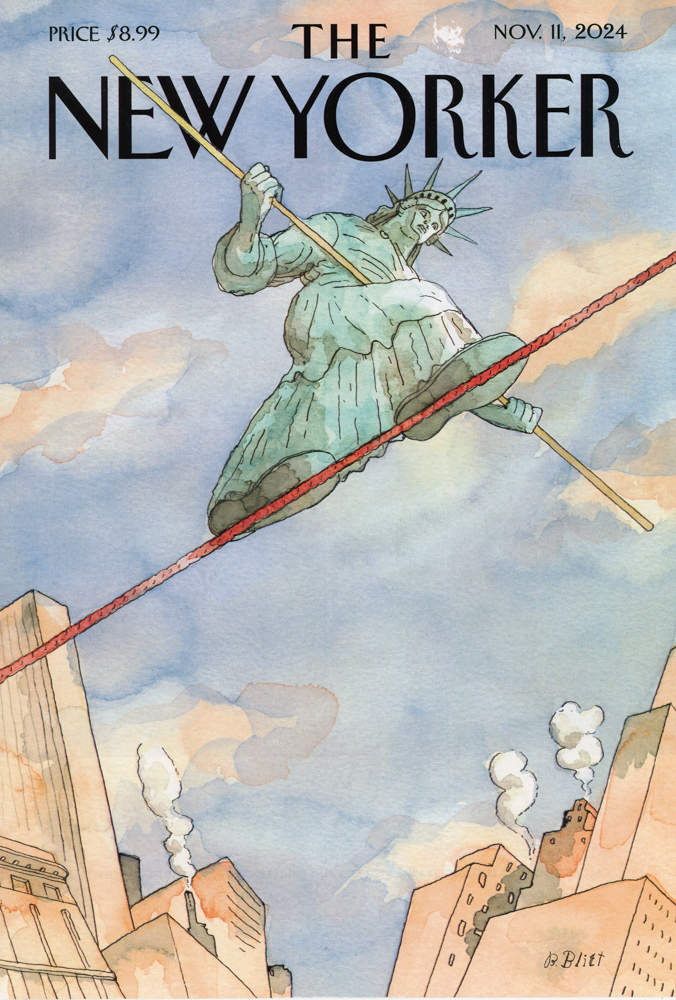
One of the covers on view, created by Canadian artist Barry Blitt. It corresponds to the November 11, 2024 issue.
The resonance of this collection lies in its double activism: that of the artist, whose work interrogates structures of authority while reaching mass audiences, and that of Rosenkrantz himself, who insists on preserving, contextualizing, and reactivating these images for new viewers. His commitment underscores the importance of cultural memory and its circulation. By safeguarding this archive, Rosenkrantz transforms the act of collecting into a form of political work—an act of care for dissenting voices that might otherwise be absorbed by the oblivion of popular culture.
The New Yorker cover has always oscillated between elegance and critique, between surface and depth. Rosenkrantz’s collection captures precisely this oscillation, but it also extends it into a larger discourse on the role of the image in shaping civic consciousness. In bringing together these works, he not only celebrates their aesthetic brilliance but also foregrounds their critical potency: a sustained reminder that art, even in the format of a magazine cover, can be a site of resistance, irony, and truth.
Ultimately, the Rosenkrantz collection is not just about the visual identity of The New Yorker; it is about the persistence of images that speak truth to power, and about the responsibility of collectors and artists alike to keep those images alive in the cultural bloodstream. In the meeting of artist and collector, political vision and curatorial devotion, the collection itself becomes a work of art—an archive of vigilance and imagination that remains urgent for our present.

Jens G. Rosenkrantz Jr. is a Cincinnati-based photographer and cultural leader whose career has been marked by a sustained effort to build bridges between artistic creation and community life. After professional forays into finance and gastronomy, he directed his energies toward the arts, finding in digital photography a medium for both aesthetic and conceptual exploration. His work, shown in local exhibitions and held in private collections, combines technical precision with a discerning sensitivity to urban and natural environments, always in dialogue with the social transformations of his time.
Beyond his individual practice, Rosenkrantz has played a pivotal role in Cincinnati’s cultural ecosystem as Director of The Annex Gallery, located within the Pendleton Arts Center. The gallery has served as a platform for both established and emerging artists, as well as a site for international exchanges. From this position, he has promoted collective exhibitions and collaborations with institutions and nonprofit organizations, with a particular emphasis on forging connections between the North American and Cuban art scenes. His initiative “Bridges Not Walls” stands as a testament to his belief in art as a vehicle for intercultural dialogue.
His commitment to cultural life is also evident in his active involvement with boards and organizations that advance arts education and community-based practices. With an open and dynamic vision, Rosenkrantz has established himself as a key figure in fostering experiences that transcend the purely aesthetic to become acts of encounter and community building.

Barry Blitt Taken from https://slate.com/culture/2017/11/em-new-yorker-em-cover-illustrator-barry-blitt.html
Barry Blitt born on April 30, 1958, in Côte Saint-Luc, Quebec, Barry Blitt is a Canadian illustrator and caricaturist whose career has flourished within the American editorial landscape. He studied at the Ontario College of Art & Design, graduating in 1982, and from an early age displayed a penchant for graphic satire: at sixteen, he published his first drawings in the yearbook of the Philadelphia Flyers. After contributing to local Toronto magazines and to Entertainment Weekly, where he created caricatures of celebrities, Blitt soon gained an international profile.
His name became inextricably linked with The New Yorker, a magazine he began contributing to in 1992 and for which he has produced more than one hundred covers. Working in pen, ink, and watercolor, Blitt merges technical delicacy with sharp irony, consistently addressing political and cultural themes through incisive satire. Among the many public figures he has portrayed, his depictions of Donald Trump stand out as especially iconic, notable for the biting wit with which they expose the excesses and contradictions of his public persona.
Beyond his contributions to The New Yorker, Blitt has illustrated opinion columns for The New York Times and collaborated with numerous other outlets. His career achieved a milestone in 2020 when he was awarded the Pulitzer Prize for Editorial Cartoons, a distinction that confirmed his place as one of the most influential political illustrators of his generation. Blitt’s work, consistently sharp and satirical, does more than chronicle political events: it interprets them with a visual language imbued with critique, irony, and humor.



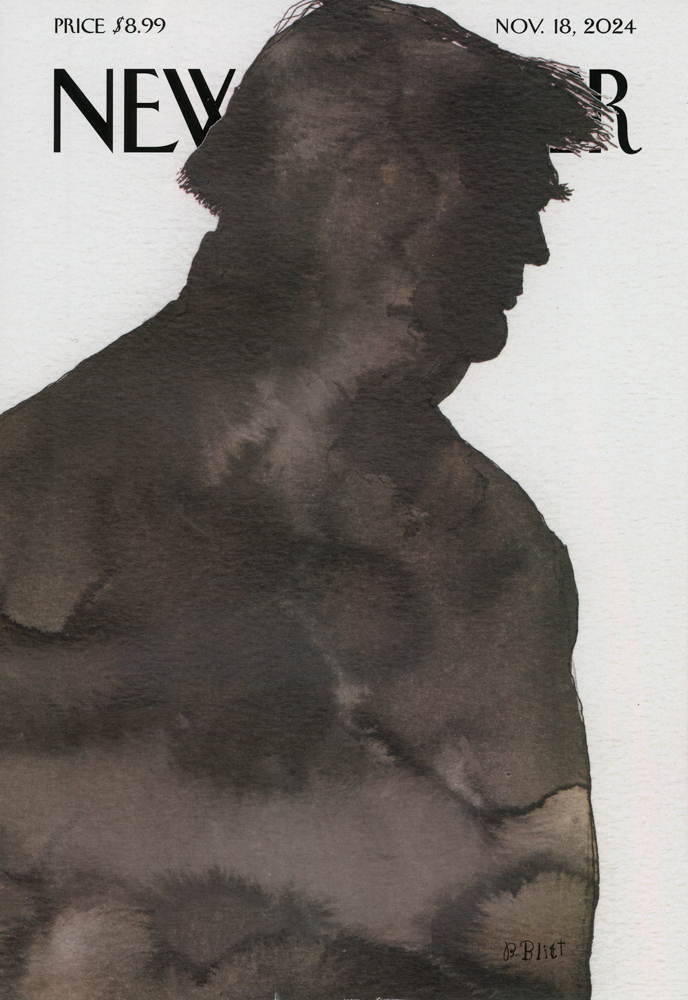
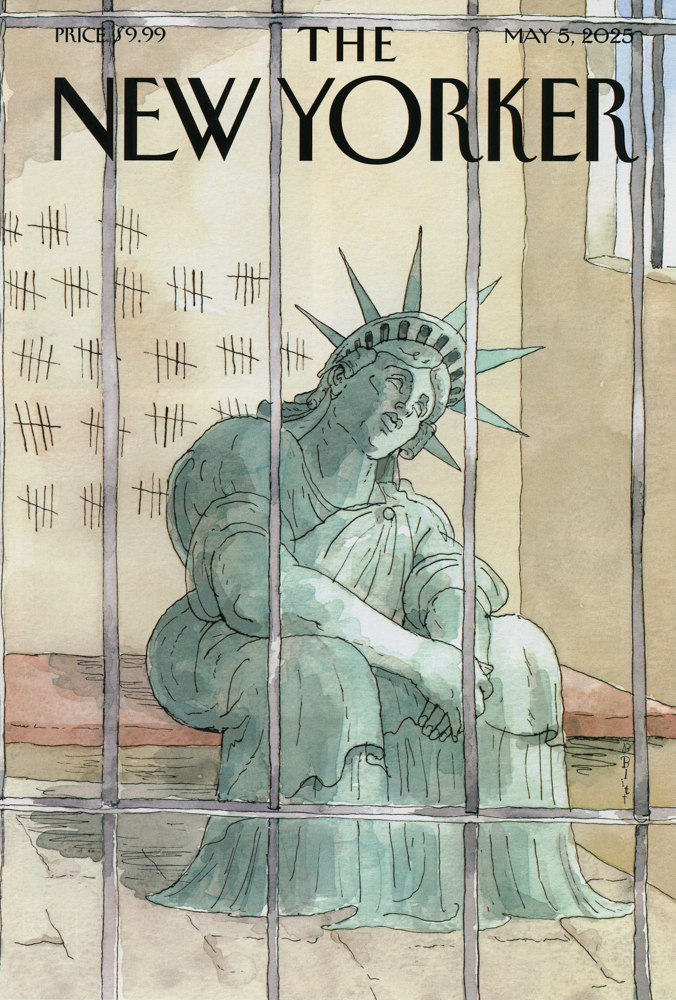
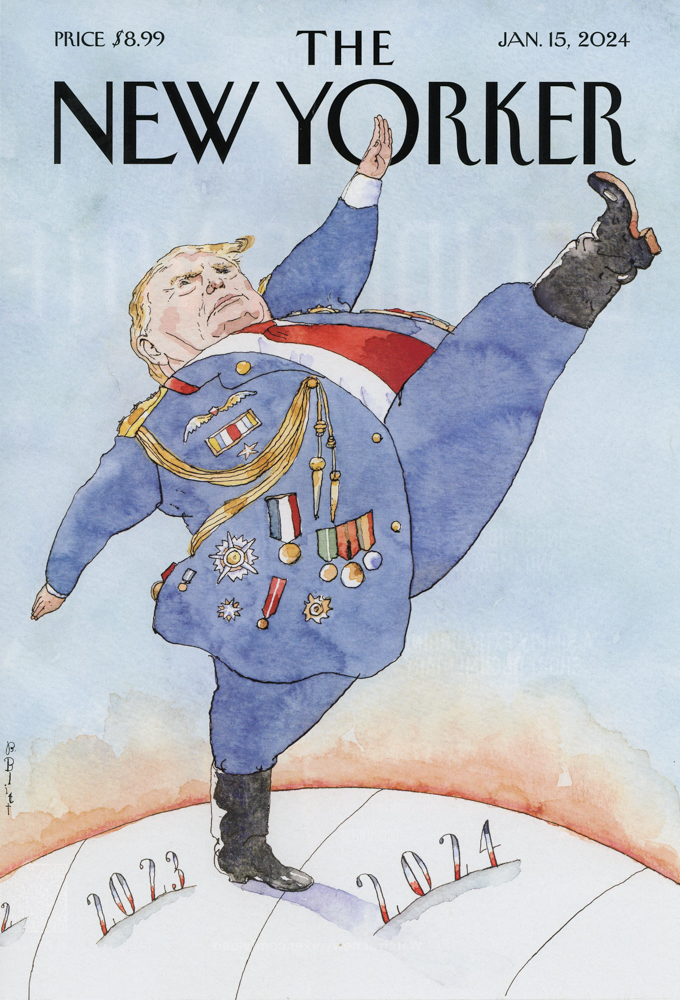
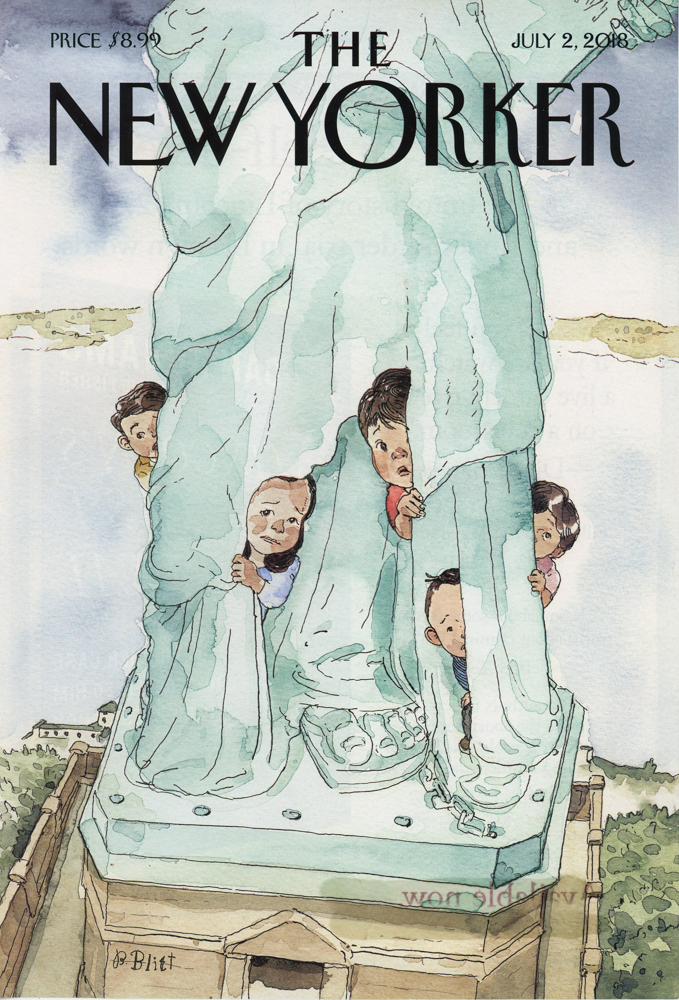
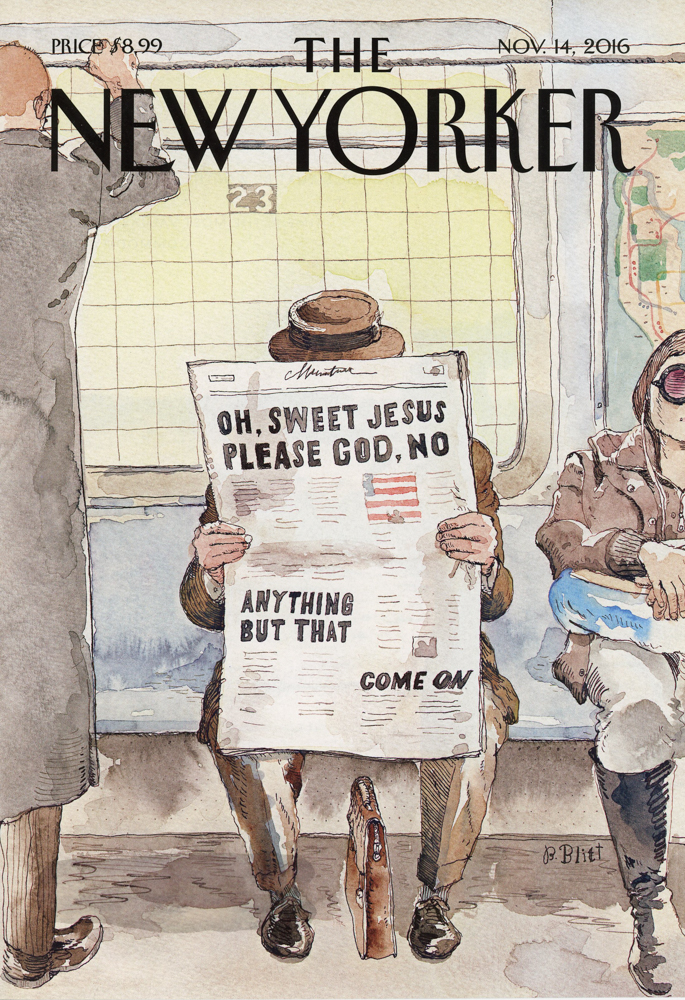
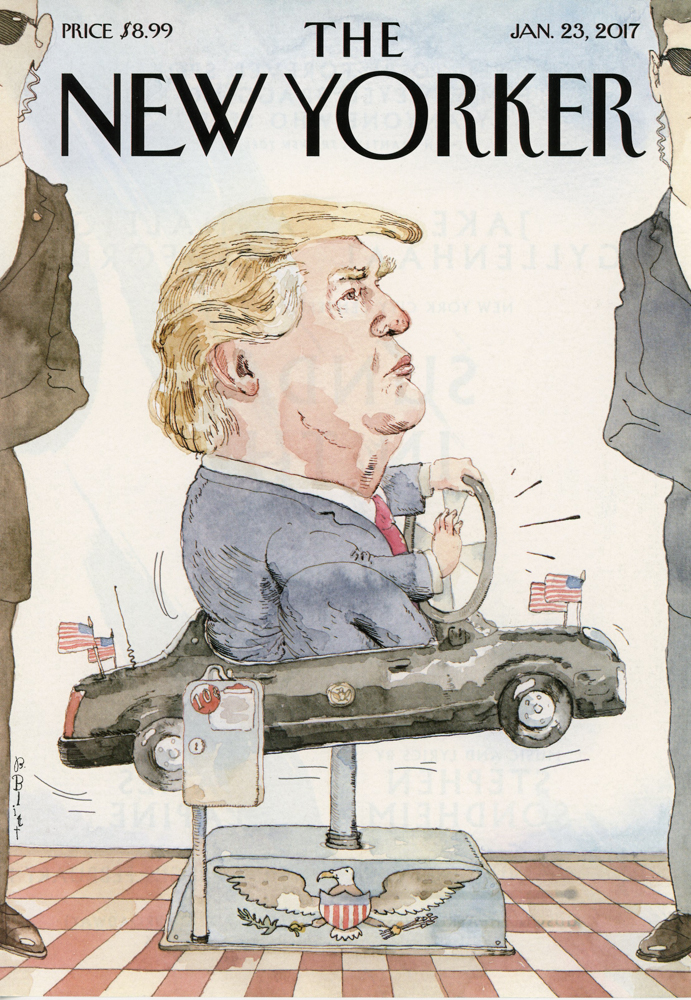

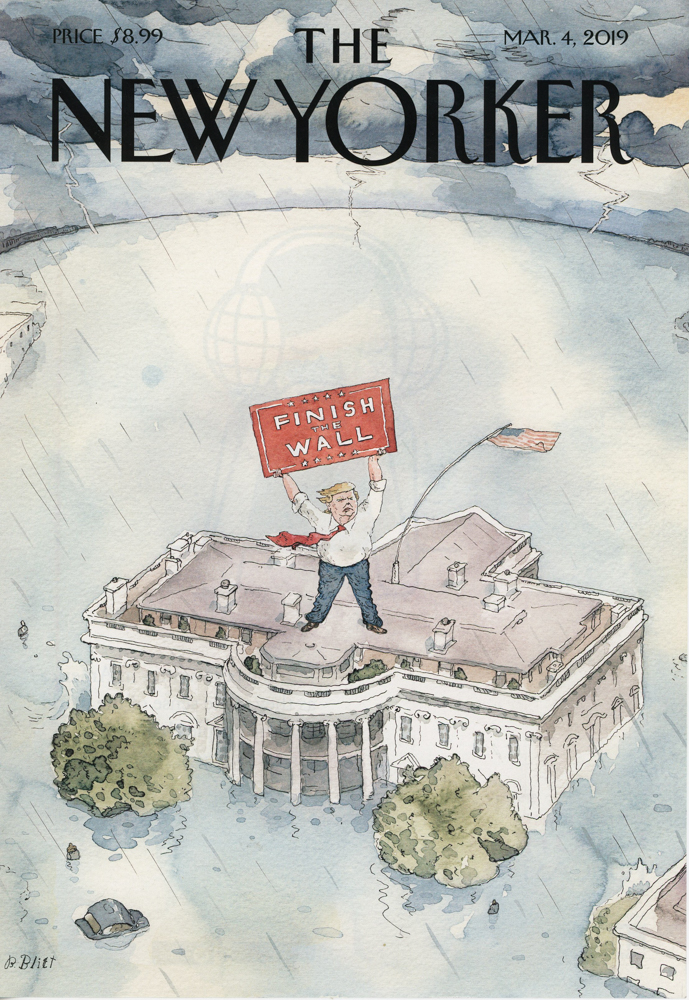
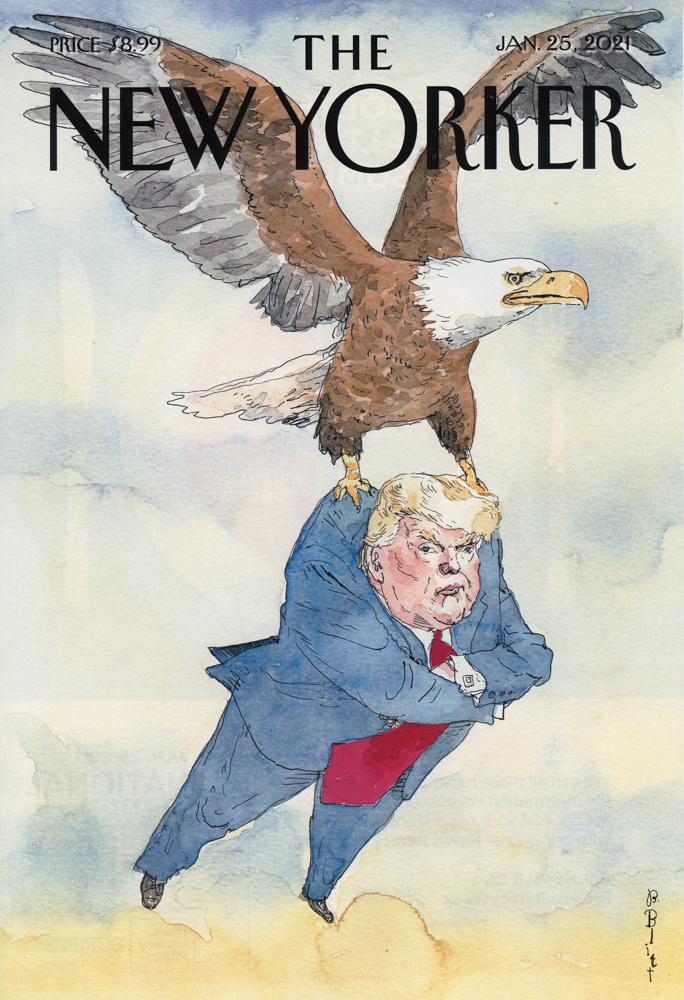
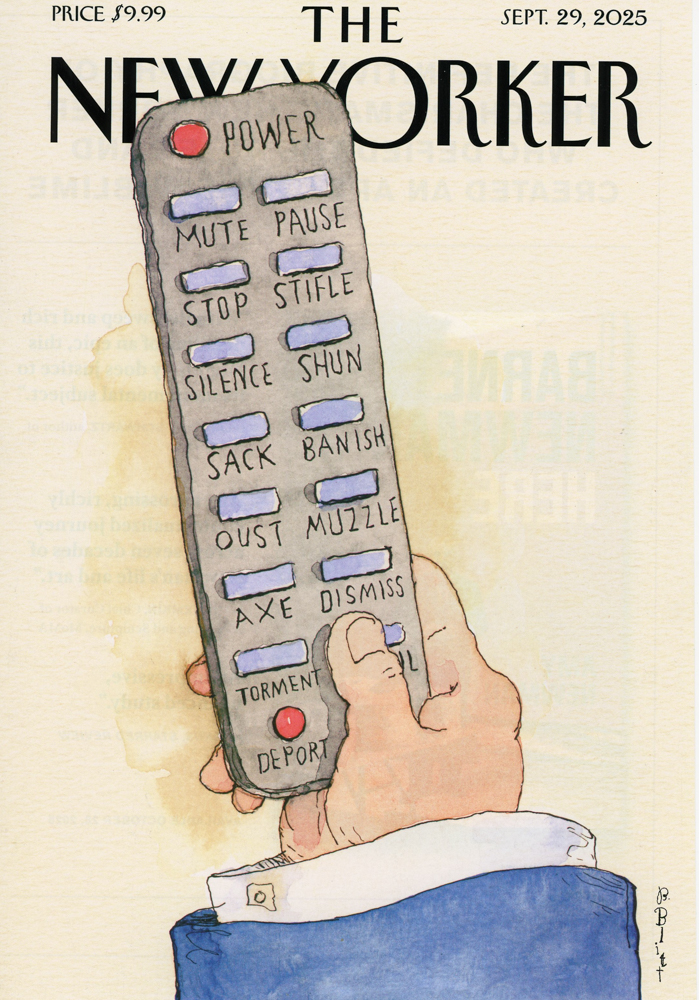
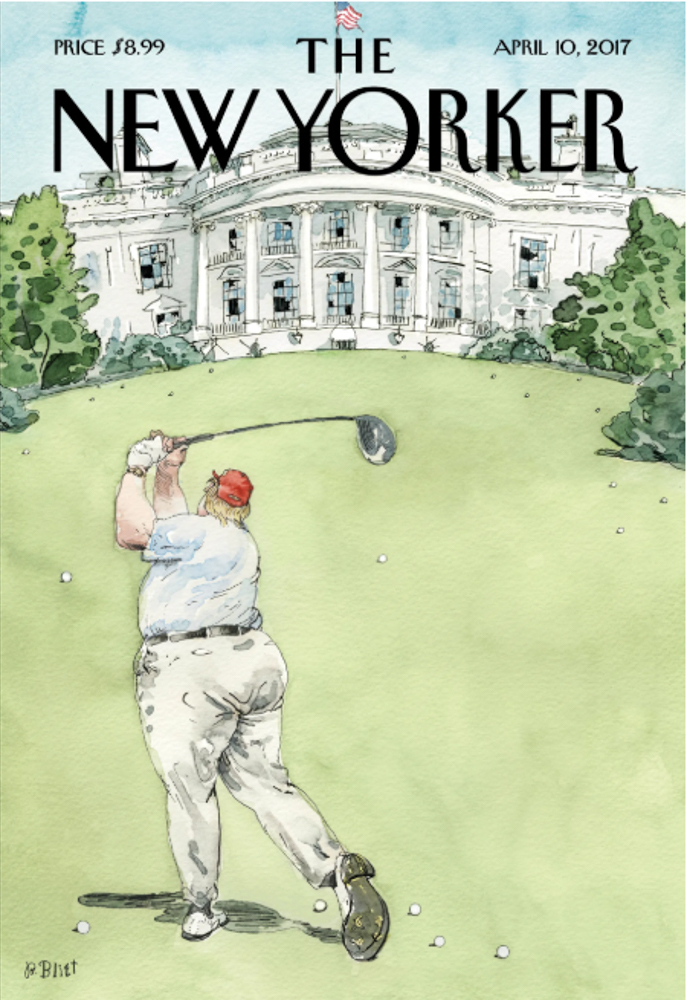



Philately was one of the small devotions of my childhood. I inherited hundreds of stamps from my father. I could never say whether he collected them himself or simply bought them for my brother and me. Among all of them, one in particular held my gaze with disproportionate insistence: a reproduction of The Sleeping Gypsy, the 1897 painting by Henri Rousseau that I finally saw years later at the MoMA.


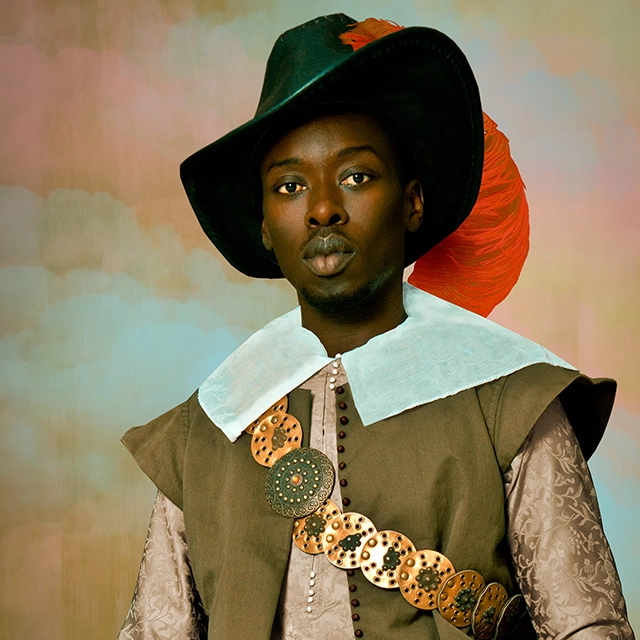
Staged Self-Portraits, Erased Histories and the Recasting of the American Dream

The first solo exhibition of young photographer Mark Duc Nguyen